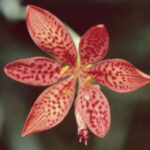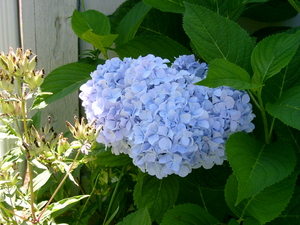Bougainvillea is hardy in the U.S. Department of Agriculture zones 9 or higher. Although I live in zone 4, I can still grow this beautiful vining plant as a houseplant. A friend of mine has a Bougainvillea growing, so one day I took several cuttings to start one for myself. Here are the directions so you can propagate a Bougainvillea of your own.
Gathering the Cuttings
The best time to take Bougainvillea cuttings is in the spring. Although you can try to start cuttings any time of the year, spring is always the better time, because the plants are geared into growing.
Sterilize your pruning shears by wiping the blades down with rubbing alcohol. This reduces the spread of disease that the Bougainvillea may have or your pruning shears may have from other cuttings. If the Bougainvillea is not right next to your potting table, take along a wet paper towel and a big plastic bag. You’ll need these to keep the cuttings hydrated, humid and to reduce the shock to the cutting.
Examine the Bougainvillea to find healthy stems. Cut the stem right below a leaf. The cutting should measure about 6 inches in length.
Remove all the leaves, except for the top two or three top of the stem. Wrap the cut end of the stem in the wet paper towel to keep them hydrated. You’ll want to take several cuttings, because Bougainvillea can be difficult to propagate and not every stem will form roots. Insert the paper towel wrapped stems into the plastic bag and close the bag to hold in moisture. It also makes a humid environment.
Fill the Pots
Prepare a 2-inch pot for each cutting you want to propagate. You can use disposable cups to grow the cuttings. Make sure the pots or cups have drainage holes at the bottom. To form a drainage hole in the bottom of the disposable cups, push a nail through the bottom. Each pot should have at least two holes so the water can drain away.
Fill the planting containers with well-draining potting soil. Firm the soil down with your fingers to remove air pockets. The soil level should be 1/4 inch below the rim of the pot.
Planting the Stems
Remove a stem from the wet paper towel. Dip the wet, cut end of the stem into rooting hormone. Tap the stem with your finger to remove any excess rooting hormone. When you use rooting hormone, only use a small amount at the very tip of the cutting. If you use too much, it can burn the plants instead of helping them to form roots.
Form a hole in the soil with the blunt end of a pencil. Insert the end with rooting hormone into the hole so that it is 1.5 inched below the soil level. Firm the soil around the cutting to help hold it upright. Repeat this procedure for each cutting that you want to start. You can plant two stems in each pot or cup.
Water the soil thoroughly. Set the pots on a drainage rack to allow the excess water to drain away. If you have several pots, put them in an old tray or pan with sides. This will contain water spills and it also helps to keep the pots in an upright position. Place the pan in a big plastic bag and close the top of the bag to help retain humidity.
Location
Find a bright window to set your Bougainvillea cuttings in, but keep them out of direct sunlight. The plastic bag acts like a hothouse, and it will be too hot for them. Maintain a soil temperature between 65° and 75° Fahrenheit. A heat mat set to this temperature works well because you can keep the temperature at a constant setting.
Watering
Check the soil daily for moisture. Mist the cuttings and the soil to keep the planting medium moist, but don’t saturate the soil or the cuttings will rot.
Watch for Roots
It can take up to three months before the Bougainvillea stems form roost, but you’ll want to start checking the cuttings for roots after six weeks. When you see new growth on the stems, you’ll know that the roots have formed. You can also pull gently on the stems to test for root formation. If you feel a slight resistance, then the cuttings have rooted.
Remove the rooted cuttings from plastic bag. Continue to grow your rooted Bougainvillea in a bright location, remembering to water the soil to keep it moist but not soggy. When you notice roots growing out the bottom of the pot, that is the time to transplant the Bougainvillea into a bigger pot. Continue to grow and care for your Bougainvillea as you do the parent.
Sources:
The Bougainvillea Growers: Bougainvillea 101
Orchard Nursery: Growing Bougainvillea.pdf






